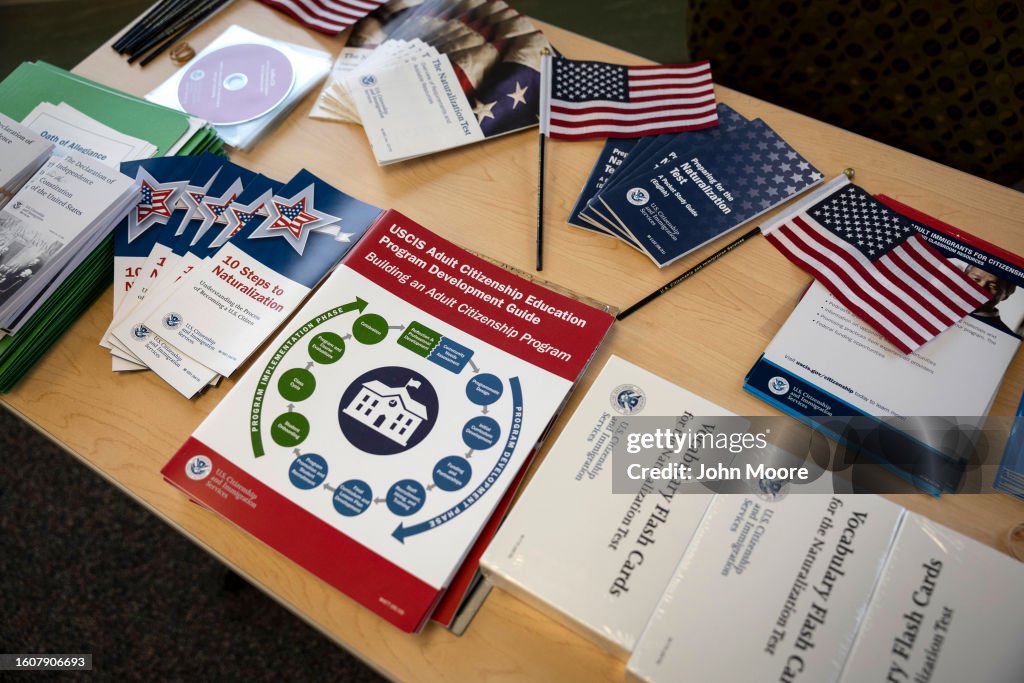By Felicia J. Persaud
News Americas, FORT LAUDERDALE, FL, Fri. Feb. 9, 2024: The United States Citizenship and Immigration Services, (USCIS), remains extremely backlogged in processing of petitions, but that is not stopping it from moving to have migrants shell out more in fees.

USCIS relies primarily on immigration fees collected from applicants and petitioners for immigration and naturalization benefits to fund its operations. These fees cover the costs associated with processing immigration benefit requests, including those provided without charge to refugees, asylum seekers, and certain other applicants or petitioners. According to its own estimates, if the agency continues to operate at current fee levels, it will face an annual revenue deficit averaging $1.8 billion.
To address its funding crisis, USCIS introduced a final rule in August 2020, proposing an average fee increase of 20 percent. Although the rule was set to take effect in October 2020, it encountered significant opposition and legal challenges, ultimately leading to a preliminary injunction in federal court. Consequently, USCIS has not implemented the fees outlined in the 2020 fee rule.
Now it is on the verge of implementing substantial increases in immigration fees, pending the White House’s review of the agency’s final proposed fee schedule. USCIS plans to release the final rule in April, following a comprehensive assessment of nearly 8,000 comments submitted in response to its Notice of Proposed Rulemaking published in January 2023.
These fee adjustments represent the first update to USCIS’s fee structure since 2016 and are aimed at ensuring the financial stability of the agency.
The New Fee Schedule:
In the 2023 fee rule, the Department of Homeland Security, (DHS), sought to replace the 2020 fee rule entirely, introducing a new fee schedule that represents an overall weighted average increase of 40%. The agency justifies these fee hikes by asserting that they will enable it to fully cover its operational costs and enhance services. Nevertheless, many of the proposed fee increases are substantial, with some reaching staggering levels, as illustrated in the table below:
I-129 for L-1 Intra-company Transferee
Current Fee – $460, Proposed Fee – $1,385, Percent Increase – 201%
I-129 for O-1 Extraordinary Ability
Current Fee $460, Proposed Fee $1,055, Percent Increase – 129%
I-485 Adjustment of Status
Current Fee $1,225, Proposed Fee $2,820, Percent Increase – 130%
H-1B Registration
Current Fee $10, Proposed Fee $205, Percent Increase – 2,050%.
Other immigration applications are also set to increase in price: the fiancé visa petition will increase by 35%, from $535 to $720, the petition for a relative will increase by 53% from $535 to $820, and the removal of conditions application will increase by 76%, from $680 to $1,195.
In addition, fees for accompanying children will no longer be reduced, and their costs will mirror adult applications. For an immigrant family of four, the costs to bring a spouse and two children to the United States could exceed $10,000 under this new fee proposal.
The Office of Information and Regulatory Affairs, (OIRA), concluded its review of the USCIS Final Fee Rule on January 19, 2024. This final rule was submitted to OIRA on January 8, 2024. Considering that it has been eight years since the last fee adjustment, the Administration may expedite the finalization of this rule. The White House’s review constitutes the last regulatory step necessary for the agency to formalize and publish its new fee schedule.
Meanwhile, it’s important for employers to be aware that USCIS will raise its Premium Processing fee starting on February 26th as mandated by the USCIS Stabilization Act. This fee increase for Premium Processing is separate from the comprehensive fee adjustments mentioned in this article.
Felicia J. Persaud is the publisher of NewsAmericasNow.com, a daily news outlet focusing on Black immigrant issues.









